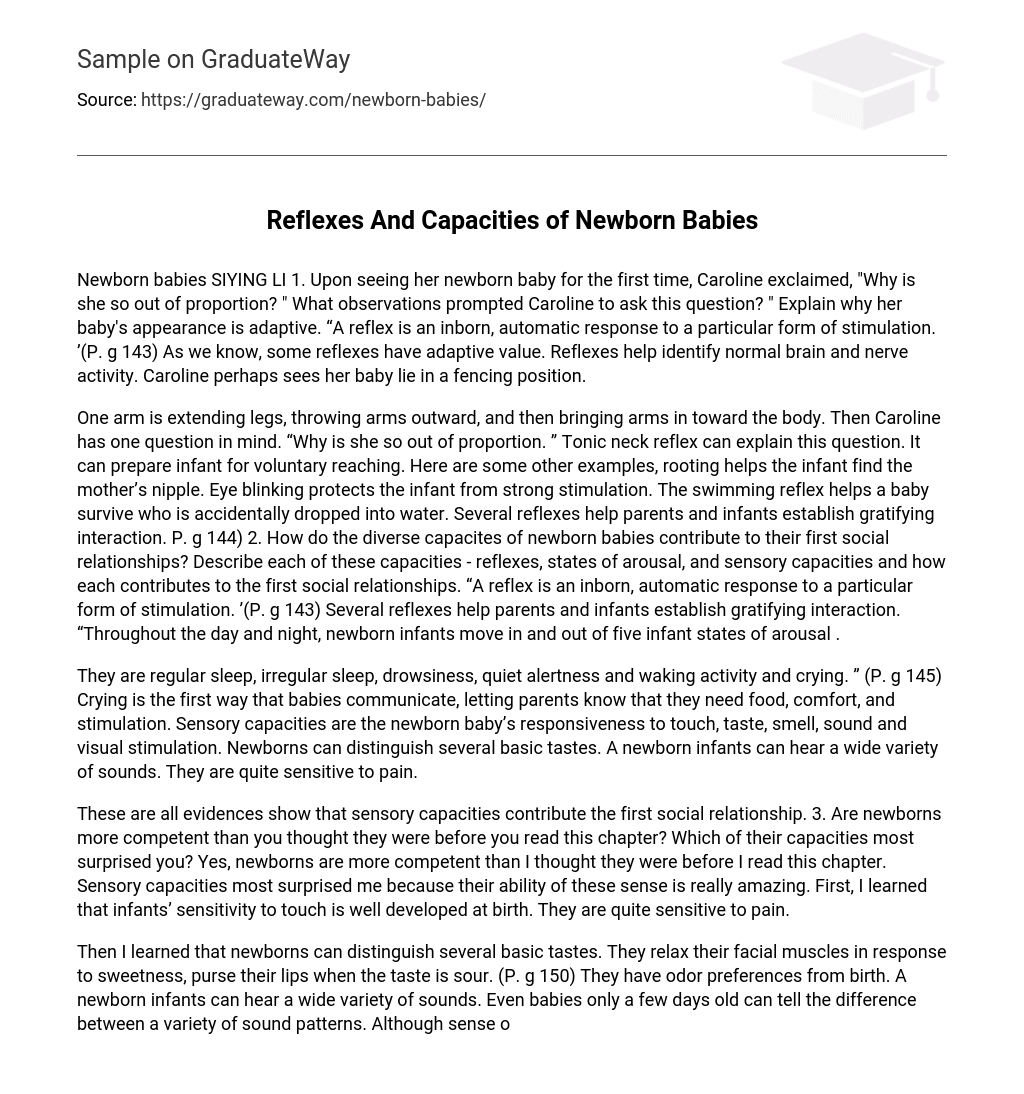Newborn babies SIYING LI 1. Upon seeing her newborn baby for the first time, Caroline exclaimed, “Why is she so out of proportion? ” What observations prompted Caroline to ask this question? ” Explain why her baby’s appearance is adaptive. “A reflex is an inborn, automatic response to a particular form of stimulation. ’(P. g 143) As we know, some reflexes have adaptive value. Reflexes help identify normal brain and nerve activity. Caroline perhaps sees her baby lie in a fencing position.
One arm is extending legs, throwing arms outward, and then bringing arms in toward the body. Then Caroline has one question in mind. “Why is she so out of proportion. ” Tonic neck reflex can explain this question. It can prepare infant for voluntary reaching. Here are some other examples, rooting helps the infant find the mother’s nipple. Eye blinking protects the infant from strong stimulation. The swimming reflex helps a baby survive who is accidentally dropped into water. Several reflexes help parents and infants establish gratifying interaction. P. g 144) 2. How do the diverse capacites of newborn babies contribute to their first social relationships? Describe each of these capacities – reflexes, states of arousal, and sensory capacities and how each contributes to the first social relationships. “A reflex is an inborn, automatic response to a particular form of stimulation. ’(P. g 143) Several reflexes help parents and infants establish gratifying interaction. “Throughout the day and night, newborn infants move in and out of five infant states of arousal .
They are regular sleep, irregular sleep, drowsiness, quiet alertness and waking activity and crying. ” (P. g 145) Crying is the first way that babies communicate, letting parents know that they need food, comfort, and stimulation. Sensory capacities are the newborn baby’s responsiveness to touch, taste, smell, sound and visual stimulation. Newborns can distinguish several basic tastes. A newborn infants can hear a wide variety of sounds. They are quite sensitive to pain.
These are all evidences show that sensory capacities contribute the first social relationship. 3. Are newborns more competent than you thought they were before you read this chapter? Which of their capacities most surprised you? Yes, newborns are more competent than I thought they were before I read this chapter. Sensory capacities most surprised me because their ability of these sense is really amazing. First, I learned that infants’ sensitivity to touch is well developed at birth. They are quite sensitive to pain.
Then I learned that newborns can distinguish several basic tastes. They relax their facial muscles in response to sweetness, purse their lips when the taste is sour. (P. g 150) They have odor preferences from birth. A newborn infants can hear a wide variety of sounds. Even babies only a few days old can tell the difference between a variety of sound patterns. Although sense of vision is least developed of senses at birth, newborns actively explore their environment by scanning it for interesting sights and tracking moving objects.





